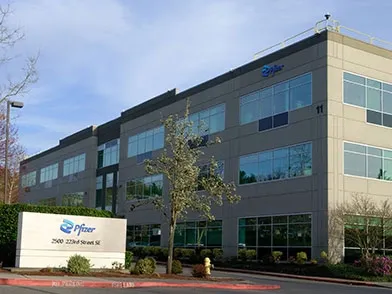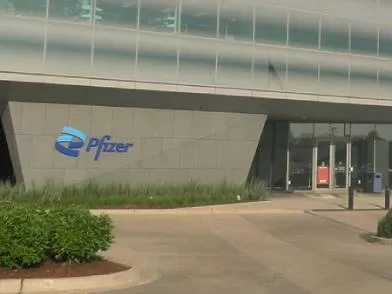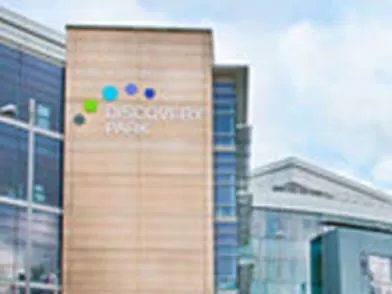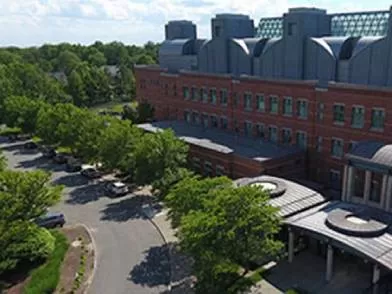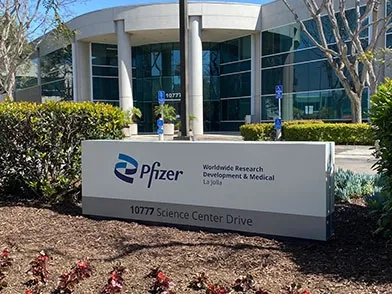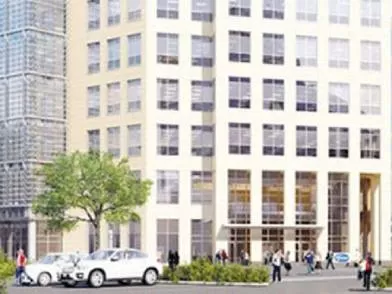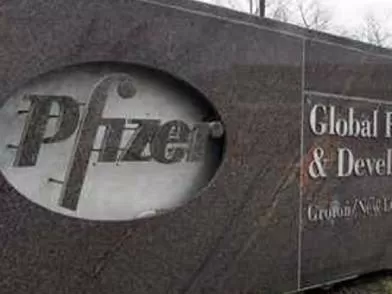
Groton, Connecticut
Research Site
Groton, CT Site Statistics:
- 160-acre site with 2.8 million-square-feet of state-of-the-art facility space at Groton.
- Groton is an integrated co-generation facility capable of supplying 100% of the site's annual energy requirements featuring renewable and green technologies such as photo-voltaic cells, on-site electric car charging stations, micro-turbines, and a low-emission gas turbine
- The Groton site features over 250,000 square feet of ergonomically designed "Flexible Office" space capable of accommodating the needs of a mobile or fixed work force.
- The space is easily configurable and offers colleagues the opportunity to participate in a dynamic workspace to the degree of their liking as well as providing access to different types of space for specific needs such as video conferencing, teleconferencing, telepresence, and team meeting rooms.
Functions: Medicinal Chemistry; Pharmacokinetics, Dynamics & Metabolism; Pharmaceutical Sciences; Clinical Trial Operations; Drug Safety; Comparative Medicine; Regulatory
Key Technologies: Molecular Profiling, Primary Pharmacology Screening, Protein and Cellular Reagents, GeMM (Genetically Modified Models), Liquid Compound Management and Distribution, Reagent Antibody, Discovery High Throughput Screening, ADME (absorption, distribution, metabolism, excretion) Screening, Microbiology, Developmental and Reproductive Toxicology, Safety Pharmacology, BioBank, Medicinal Chemistry, Structural Biology, Process Chemistry, Chemical Engineering, Analytical Chemistry, Compound Safety Profiling, BioImaging, Electron Microscopy, Process Safety Screening, Continuous Processing, Materials Science, Active Ingredient and Formulation Development
Visit Pfizer Groton
Many of the discoveries and innovations that drive the Pfizer pipeline to new potentials occur in the world-class research and development laboratories in Groton, Connecticut. Pfizer Groton has a long and proud history of drug discovery and development including Zoloft and Zithromax, and more recently, Xalkori and Xeljanz. Today Groton colleagues are leading the way in drug development, providing vital information, tools, technologies, data, drug targets, and compounds to scientists around the globe, at every level of drug discovery and development, and across all of Pfizer's therapeutic areas. Nearly every Pfizer product is developed, in part, in Groton. Examples of colleagues’ expertise include tissue and tumor targeting, pediatric drug delivery, and drug-to-drug interaction. The site’s key capabilities include the following functions:
- Development Operations: Oversees operational delivery of Pfizer’s clinical portfolio maintaining high levels of regulatory compliance, delivering quality data, and monitoring patient safety in Pfizer’s clinical trials.
- Drug Safety Research and Development: Provides safety assessments of new drug target selection, by designing and executing drug safety / toxicity studies required for support of early clinical trials.
- Medicinal Chemistry: The team is tasked with the design and synthesis of candidate drug molecules. Key disciplines include Structural Biology and Biophysics; Synthetic, Computational and Analytical Chemistry; Natural product biosynthesis and protein conjugation technologies.
- Worldwide Safety and Regulatory: Develops regulatory strategy for assets potentially selected for new drug applications, and maintains global pharmacovigiliance standards for development compounds and mature products.
- Pharmacokinetics, Dynamics & Metabolism: Scientists within this team are accountable for evaluating the absorption, distribution, metabolism and excretion of our development candidates, as well as building the key properties into the design of new therapies. In addition, scientists in this team undertake early pharmacology and high throughput screening to identify novel lead compounds, which form the basis of our early drug discovery programs.
- Pharmaceutical Sciences: Determines how the drug will be made, including formulation (the recipe for making a drug, including inactive ingredients used to hold it together and allow it to dissolve at the right time), delivery mechanism (the way the drug is taken – by mouth, injection, inhaler) and large-scale manufacturing methodologies (how you make the drug in large quantities).

